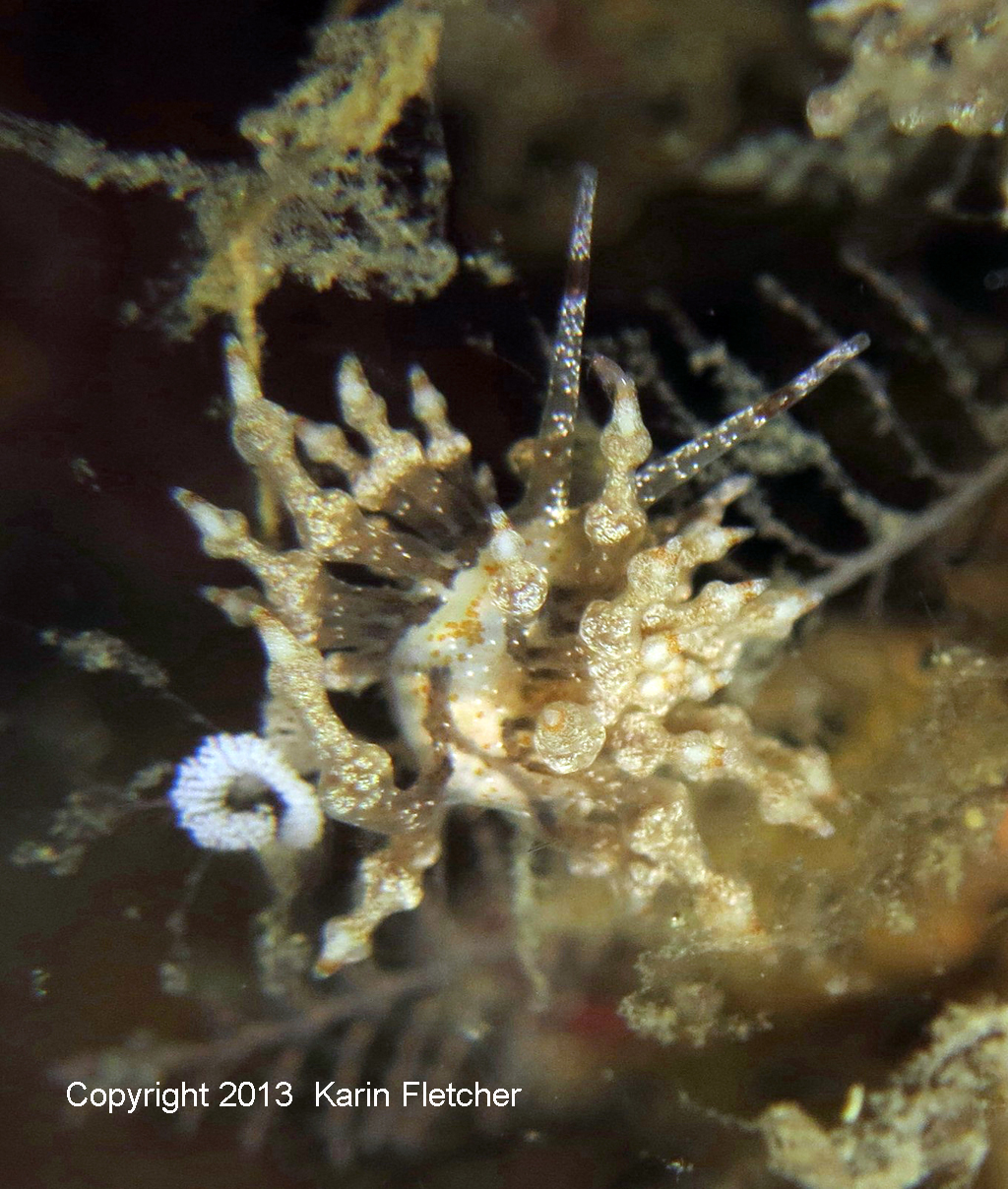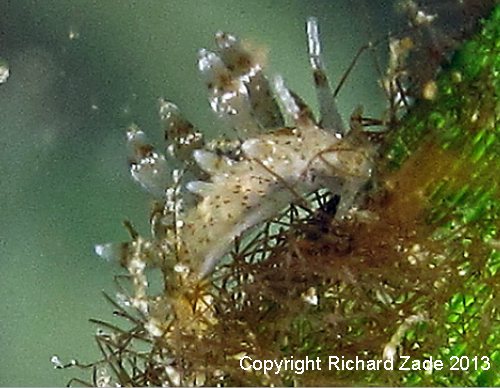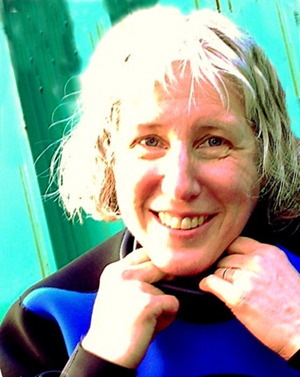 |
Eubranchus misakiensis Baba 1960
Image courtesy of Karin FletcherPort Orchard Passage, Washington
Canon S100 in a Fisheye Fix housing with RecSea 3 element (+3, +5, +10) macro lenses.
Eubranchus misakiensis Baba 1960
Originally described from Misaki, Japan, this little aeolid's geographic range has grown with time. I first came upon it in 1970 in San Francisco Bay, just 10 years after its description. At first we thought it may have been inadvertently introduced into the bay from Japanese ship's bilge water, but there is really no way of knowing which direction the population spread was going - east of west.
 |
I sent specimens to Dr. Kikutaro Baba, the species describer for confirmation of ID and he replied back with these amazing drawings (Baba 1, Baba 2) of the anatomy, comparing his Misaki specimens with mine from SF Bay. Recall that this was before the internet. Years later Dr. Gordon Robilliard told me he thought he had seen it at his Friday Harbor study sights in north Puget Sound, but couldn't say for sure. One other sighting of E. misakiensis was Rich Zade's sighting at Point Hudson, Port Townsend, Washington in June 2011. Now Karin has it in Port Orchard Passage, Washington. Who knows, maybe its origin was here in Puget Sound and not in Japan. Her photo clearly show the dark branching of the gut, the round chocolate brown spots of the body surface, the brown band on the head tentacles and the subapical yellow ring on the cerata. It is hard to identify the hydroid it is feeding on but it looks pretty close to the Obelia it feeds on in San Francisco Bay. Looks like Ali and I need to add Puget Sound to this species geographic range. |
Sammamish, WA 98074
Jun., 2013
Send Dave email at davidwbehrens@gmail.com
Karin Fletcher
 |
Karin Fletcher and her husband, Doug Miller, have been scuba diving in Puget Sound since 2006. In 2009, we moved to a house on Rich Passage near Bremerton, WA where we have been diving at least once a week since then. Having a spot where we can dive year-round gave me the idea to keep track of which nudibranch species I see and when I see them. So, while Doug keeps track of fish and invertebrate species for REEF surveys, I count nudibranchs. I've seen fifty nudibranch species, which is about half of the total nudibranch population for this region, in an area 800 meters on either side of our "house reef." Even after over 300 dives in this one area I am still finding species that I have not seen before. I use a Canon S100 in a Fisheye Fix housing with RecSea 3 element (+3, +5, +10) macro lenses so I can see afterwards what I missed on the dive.
Send Karin email at karin@milltech.com
|

|
